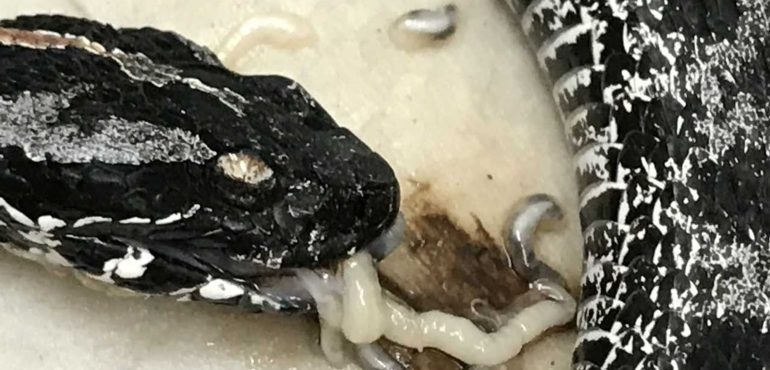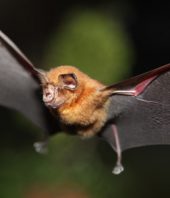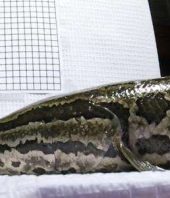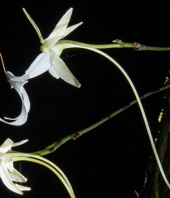Burmese pythons are a big, invasive problem in Florida — but an invasive parasite carried inside those snakes could spread further than the reptiles themselves, a new study finds.
Scientists discovered the non-native bloodsucking worms, which are called pentastomes, crawling in the lungs of three dead pygmy rattlesnakes in Central Florida last year, according to a study published in Herpetological Review in March. The three snakes were a species native to Florida and were found in Volusia County’s Lake Woodruff National Wildlife Refuge.
“Right after it died, these parasitic worms started crawling out of its mouth,” lead researcher Terence Farrell, a biology professor at Stetson University, said of one of the rattlesnakes during an interview with WESH.
In a statement released by Stetson, Farrell said he and another expert had “been studying pygmy rattlesnakes for decades and found this occurrence pretty alarming ... We conducted research and found that these types of parasites have never been found in pygmy rattlesnakes before.”
Sequencing DNA from the parasites in the rattlesnakes showed the worms were from Southeast Asia and had spread to the native Florida snakes from invasive pythons. The fact that invasive, bloodsucking worms turned up in a native species more than 100 miles from the Burmese python’s range in South Florida shows how quickly the parasite is spreading beyond its original host, researchers said.
“The parasites are moving north rapidly along the peninsula and appear to have some major health effects on pygmy rattlesnakes,” Farrell said.
Researchers said the parasites take up residence in the lungs of mammals and reptiles that eat prey contaminated with the worms.
There’s a dense pygmy rattlesnake population at Lake Woodruff National Wildlife Refuge, researchers said, and scientists have been “intensively” studying them for 26 years — but until this fall there was no evidence of the bloodsucking pentastome, “indicating likely recent introduction to the population,” the study said.
“The parasites that were found in the pygmy rattlesnakes were larger than the ones found in Burmese pythons,” Farrell said in a statement. “It’s a nasty situation because the pygmy rattlesnakes haven’t evolved or developed defenses against the parasite.”
The invasive bloodsucking worms were discovered years ago in nine native snake species in South Florida, where the Southeast Asian parasite was likely introduced by invasive Burmese pythons, researchers said. Burmese pythons are among the largest snakes in the world and have threatened endangered and native species in the state since they took hold in South Florida decades ago — possibly the result of pets being released in the wild, or of snakes escaping a breeding facility during Hurricane Andrew, according to the Florida Fish and Wildlife Conservation Commission.
There’s reason to believe the parasites Burmese pythons introduced could spread to snakes and other animals beyond Florida, Farrell said.
“This parasite isn’t just a Florida problem,” Farrell said in a statement. “We have no idea how much of the U.S. this parasite will spread and move into, which may cause it to become a nationwide problem in a few years.”
Researchers said the parasites could have negative health consequences for infected snakes — and could even be partly responsible for “major declines in pygmy rattlesnake populations in the last 15 years in portions of Everglades National Park,” the study said.
The risk of humans getting the parasite is low, Florida Today reports.
“There are relatives of this parasite that people have gotten by eating raw snakes,” Farrell said, according to Florida Today. “There isn’t a human health concern at this time.”
Even so, the parasites could harm entire ecosystems if they kill too many snakes, WESH reports.
Source: Miami Herald, Full Article






